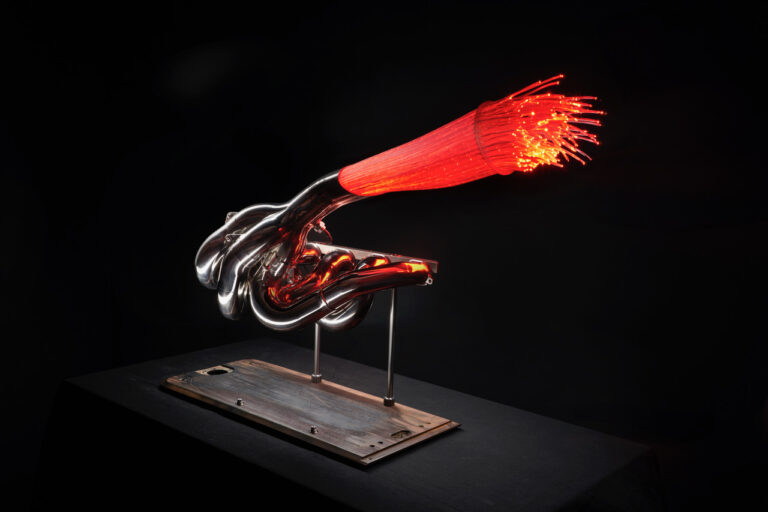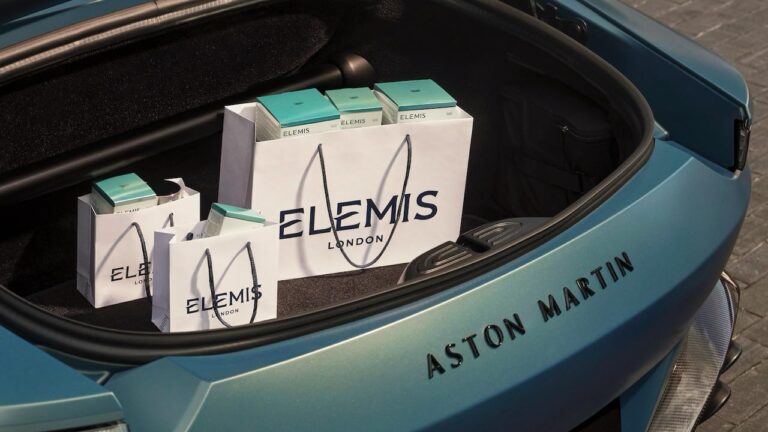POWERTRAIN
INTERNAL COMBUSTION ENGINE
The three-litre 120° V6 F163CF of the F80 is the ultimate expression of the Ferrari six-cylinder engine. This unit produces an astonishing peak power of 900 hp, making it the Ferrari engine with the highest specific power of all time (300 cv/l), which the electric front axle (e-4WD) and rear motor (MGU-K) of the hybrid system add another 300 cv.
The link with motorsports, and endurance racing in particular, is vital: the architecture of this engine and many of its components are closely derived from the powerplant of the 499P, which won the last two editions of the 24 Hours of Le Mans. Commonalities with the car competing in the World Endurance Championship (WEC) include the architecture, crankcase, layout and drive chains of the timing system, oil pump recovery circuit, bearings, injectors and GDI pumps.
Naturally, there is also technology carried over from Formula 1, from which the F80 inherits both the concept of the MGU-K (with the development of an industrially manufacturable electric motor similar to the unit used in Ferrari F1 cars) and the MGU-Hs (which generate power from the excess kinetic energy from the rotation of the turbines created by the heat energy from the exhaust gases) with a bespoke e-turbo application.
For maximum performance in all possible conditions, every aspect of the calibration of the engine has been taken to the extreme, focusing in particular on the ignition and injection timing, the number of injection events per stroke and the management of the variable-phase valve timing. The F80 is equipped with the first Ferrari road car engine to benefit from a new approach for statistical knock control, which lets the engine operate even closer to the knock limit, allowing the use of higher combustion chamber pressures than ever (+20% compared with the 296 GTB) to unleash even more of the engine’s potential.
Another crucial aspect has been the work dedicated to the dynamic calibration of the torque curve in every gear, an all-time first for a Ferrari road car. This part of the project focused on actual road-driving conditions and the management of the e-turbo system because knock and compressor surge limits vary depending on whether they are measured in dynamic or stationary conditions. As a result of this research, a dedicated calibration was developed for each gear, allowing the engine to attain levels of responsiveness comparable to a naturally aspirated engine in all operating conditions.
The e-turbos, with an electric motor installed axially between the turbine and the compressor housing, let the engineers optimise the fluid dynamics of the engine for maximum power at mid to high engine speeds without the usual compromise this entails in terms of turbo lag at low engine speeds. Bringing electric power into the equation makes it possible to define e-turbo management strategies which negate turbo lag and ensure lightning-quick response times.
The 350 bar injectors of the GDI system are situated at the centre of the combustion chamber for optimal fuel/air mixing and, together with the multiple injection strategies adopted, ensure efficiency for outstanding performance with lower emissions. The intake and exhaust cam profiles have been revised to optimise fluid dynamic efficiency and increase maximum engine speed to 9000 rpm, with a dynamic limiter at 9200 rpm.
The intake and exhaust runners are polished for better performance; the intake runners have been shortened to reduce resistance and cool the air/fuel mixture through fluid dynamic detuning and are specifically designed to increase turbulence in the combustion chamber. The three-brick (matrices) exhaust line complies with current emissions standards (Euro 6E-bis) but is already considering future global emission regulation evolutions.
The Inconel© exhaust manifolds are designed to minimise pressure losses and are tuned to emphasise the distinctive sound of a Ferrari V6. The steel crankshaft is machined from a die-cast element and features hot-forged crankpins with an offset angle of 120°. The 1-6-3-4-2-5 firing order lends the F80 a typical Ferrari timbre. To reduce weight, the crankshaft webs and counterweights have been lightened.
The connecting rods and pistons have also been revised: the titanium connecting rods feature a toothed interface at the mating surface between the shank and the big end cap to ensure perfect alignment between the two parts and absolute assembly precision with the bearings. The aluminium pistons have been optimised to reduce weight and withstand the combustion chamber’s higher pressure and thermal loads due to the incredibly high torque and power. Specifically, high-strength DLC (diamond-like carbon) coated steel has been used for the piston pin. A dedicated oil passage hole has been added to the zone between the piston pin and the connecting rod to improve lubrication.
To lower the car’s centre of gravity, the engine has been installed as close as physically possible to the flat undertray. As a result, none of the components at the bottom of the sump are more than 100 mm below the centreline of the crankshaft. It was also decided to tilt the engine transmission unit by 1.3° in the Z axis, raising the gearbox so that it does not compromise the efficacy of the aerodynamic undertray.
To lighten the engine, the cylinder block, crankcase, timing cover and other components have been revised, while titanium screws have also been adopted. As a result of these measures, the engine weighs no more than the V6 of the 296 GTB despite a power increase of 237 hp.
The lowered installation position of the engine-transmission unit was permitted by the new smaller diameter flywheel, conceived and designed from scratch for this application. This innovative solution was made possible by the use of two sets of springs, which also contributed to reducing the overall stiffness of the system and filtering vibrations transferred to the transmission more effectively. The damper was also developed specifically for this application to attenuate the higher torsional vibration forces in the driveline and dissipate the higher thermal loads due to the increased performance.








